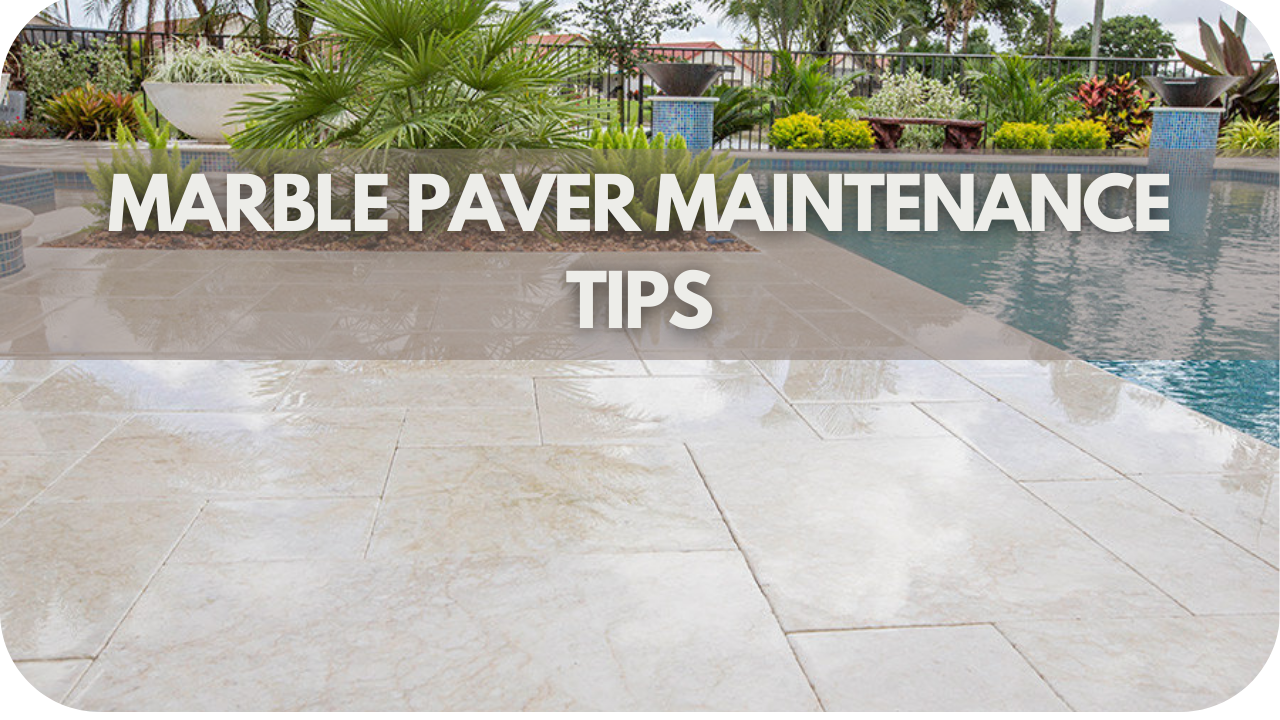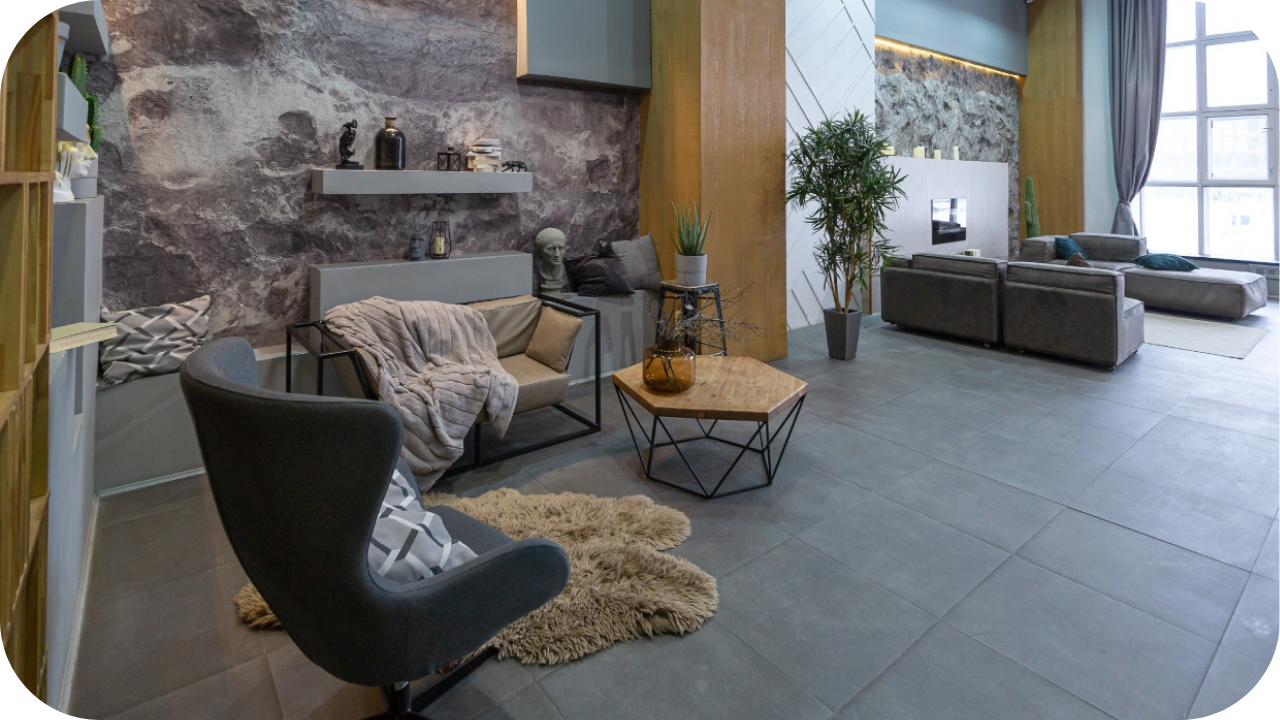
Over time, even the most stunning marble pavers can lose their shine and become stained or damaged from regular use.
Ignoring proper maintenance leads to discolouration, cracks, and a dull appearance that detracts from your outdoor space. Worse, improper care can cause long-term damage, resulting in costly repairs or replacements.
Fortunately, with the right maintenance tips, you can preserve your marble pavers’ beauty and extend their lifespan, keeping them as pristine as the day they were installed.
Tip 1. Regular Cleaning Routine
Maintaining the lustre of your marble pavers begins with a consistent cleaning routine. How often should you clean? Ideally, a quick sweep or dust daily will prevent abrasive particles from scratching the surface.
Leaves and debris can be particularly troublesome for outdoor pavers, so vigilance is key. When it comes to mopping, less is more. A damp mop is used weekly, which suffices for most indoor marble surfaces. Outdoors, you’ll want to tackle this task more frequently, especially after rainy periods.
What about cleaning products? Gentle is the watchword here. Harsh chemicals can etch or discolour your precious marble, so opt for pH-neutral cleaners specifically designed for natural stone.
Warm water mixed with a small amount of mild dish soap can be an effective homemade solution. Remember to rinse thoroughly, as soap residue can dull the finish over time. A soft-bristled brush might be employed for stubborn dirt, but caution is advised to avoid scratching.
Drying your marble pavers after cleaning isn’t just fussy housekeeping. It’s essential for preventing water spots and mineral deposits. A soft, lint-free cloth should be used to buff the surface to a shine.
Tip 2. Sealing Your Marble Pavers
Sealing your marble pavers is crucial for maintaining their beauty and integrity. As a porous material, marble readily absorbs liquids, which can lead to staining and etching over time.
A high-quality sealer is an invisible barrier, protecting your investment from spills and environmental factors. Generally, indoor marble pavers may need sealing every 3-5 years, while outdoor pavers might require annual treatment.
To test if it’s time to reseal, sprinkle water on the surface. If it beads up, your seal is still effective; if absorbed quickly, it’s time to reseal. Penetrating sealers are typically recommended for marble pavers, offering protection without altering the stone’s appearance.
Before application, ensure your pavers are thoroughly cleaned and completely dry. Apply the product evenly, allow it to penetrate, then buff away excess. Multiple thin coats often yield better results than a single thick layer.
Proper sealing protects against stains and simplifies routine cleaning. This investment in maintenance will preserve your marble pavers’ beauty for years to come, ensuring your outdoor space remains a source of pride and enjoyment.
Tip 3. Stain Removal Techniques
Stains on marble pavers are inevitable but don’t have to be permanent. Identifying the type of stain is the first step, as different marks require different approaches. For example, oil-based stains respond best to a paste made from baking soda and water.
A mixture of 12% hydrogen peroxide and a few drops of ammonia should do the trick for organic stains like coffee or tea. Rust stains can be more stubborn, but using a poultice of diatomaceous earth and a commercial rust remover often works wonders.
Never scrub marble vigorously; gentle cleaning is essential to avoid damaging the surface. Apply the cleaning solution, cover the area with plastic wrap, and let it sit for 24-48 hours.
Water stains can sometimes be buffed out with fine-grade steel wool. After removing any stain, ensure the area is thoroughly rinsed and dried. Prevention is always the best method; sealing your pavers regularly and wiping up spills immediately can protect them from future staining.
Tip 4. Preventing Scratches and Chips
Marble pavers, while beautiful, can be vulnerable to scratches and chips. How can you keep them looking pristine? Furniture is one of the biggest culprits when it comes to surface damage. Always use protective pads under chairs, tables, and other heavy items that are moved frequently.
Outdoor environments add another layer of risk. Falling branches, heavy tools, or dragging garden furniture across the surface can easily damage it. Placing rugs or mats in high-traffic areas is an effective way to reduce wear and tear.
Cleaning practices matter, too. Avoid harsh brushes or abrasive cleaning tools, as these can leave marks on the surface. Instead, use soft cloths or a mop to maintain your marble pavers.
Occasionally, accidents happen despite your best efforts. In those cases, promptly addressing minor chips or scratches with professional repair kits can prevent further damage.
Prevention starts with mindful care, and by taking these simple precautions, you can enjoy your marble pavers for years without worrying about unsightly blemishes.
Tip 5. Hiring Professionals
Enlisting professional help can make all the difference in maintaining marble pavers. Experts bring specialised knowledge, ensuring that each cleaning and repair is performed correctly. Have you considered the long-term benefits of professional maintenance?
Professionals use advanced tools and high-quality products to protect your pavers from damage and wear. Additionally, they can identify potential issues early, preventing costly repairs. Time is another valuable resource; hiring specialists save countless hours that would otherwise be spent on trial and error.
Often, the precision and care professionals provide extend your marble surfaces’ lifespan. Furthermore, reputable companies offer warranties, letting you know the work will meet high standards. Not only do professionals enhance the appearance of your pavers, but they also ensure their functionality remains intact.
Sealing, polishing, or repairing with the right expertise guarantees optimal results. Investing in professional maintenance ultimately preserves the beauty and value of your property, making it a wise choice for any homeowner.
Tip 6. Seasonal Care Tips
Seasonal shifts can challenge your marble pavers, but with the right care, you can keep them looking flawless all year round.
- Spring: Focus on removing debris that accumulated over the winter. Fallen leaves, twigs, and dirt can lead to stains or mould growth if left unattended. A thorough cleaning with a mild detergent will prepare your pavers for the warmer months.
- Summer: UV exposure can cause the marble to fade. Consider applying a UV-resistant sealant to protect the surface. Regularly sweep away dust and dirt to prevent scratches and maintain the pavers’ sheen.
- Autumn: Promptly clear falling leaves to prevent staining from decomposing organic matter. Keeping the pavers clean is crucial as leaves begin to fall.
- Winter: Freezing temperatures can cause water to expand and crack the marble. Ensure your pavers are well-sealed and remove any standing water promptly. When clearing snow, use a plastic shovel, not metal tools, to avoid scratching the surface.
Conclusion
Proper maintenance is key to preserving the beauty and durability of your marble pavers. Applying these tips regularly protects them from damage, ensuring they remain a stunning outdoor space feature for years. Stay consistent with your care routine, and your marble pavers will continue to impress with their timeless elegance.
More To Explore

Stone Accents: Adding Charm to Modern Interiors with Natural Stone
Modern interiors seek a balance of style, durability, and uniqueness. Natural stone accents are a game-changer, adding timeless elegance and character to any space. As

Natural Stone Features That Will Transform Your Living Room
Natural stone elevates any living room with elegance, texture, and timeless appeal. Its versatility allows it to enhance both modern and traditional spaces. From stone


